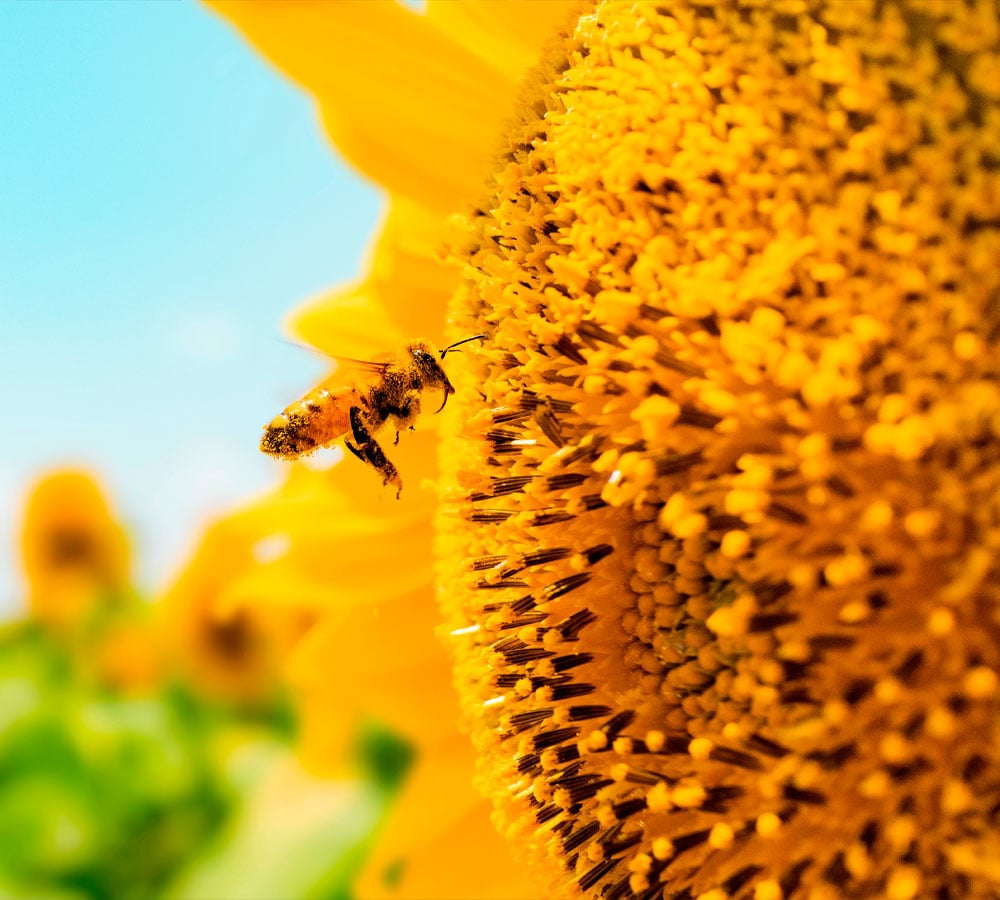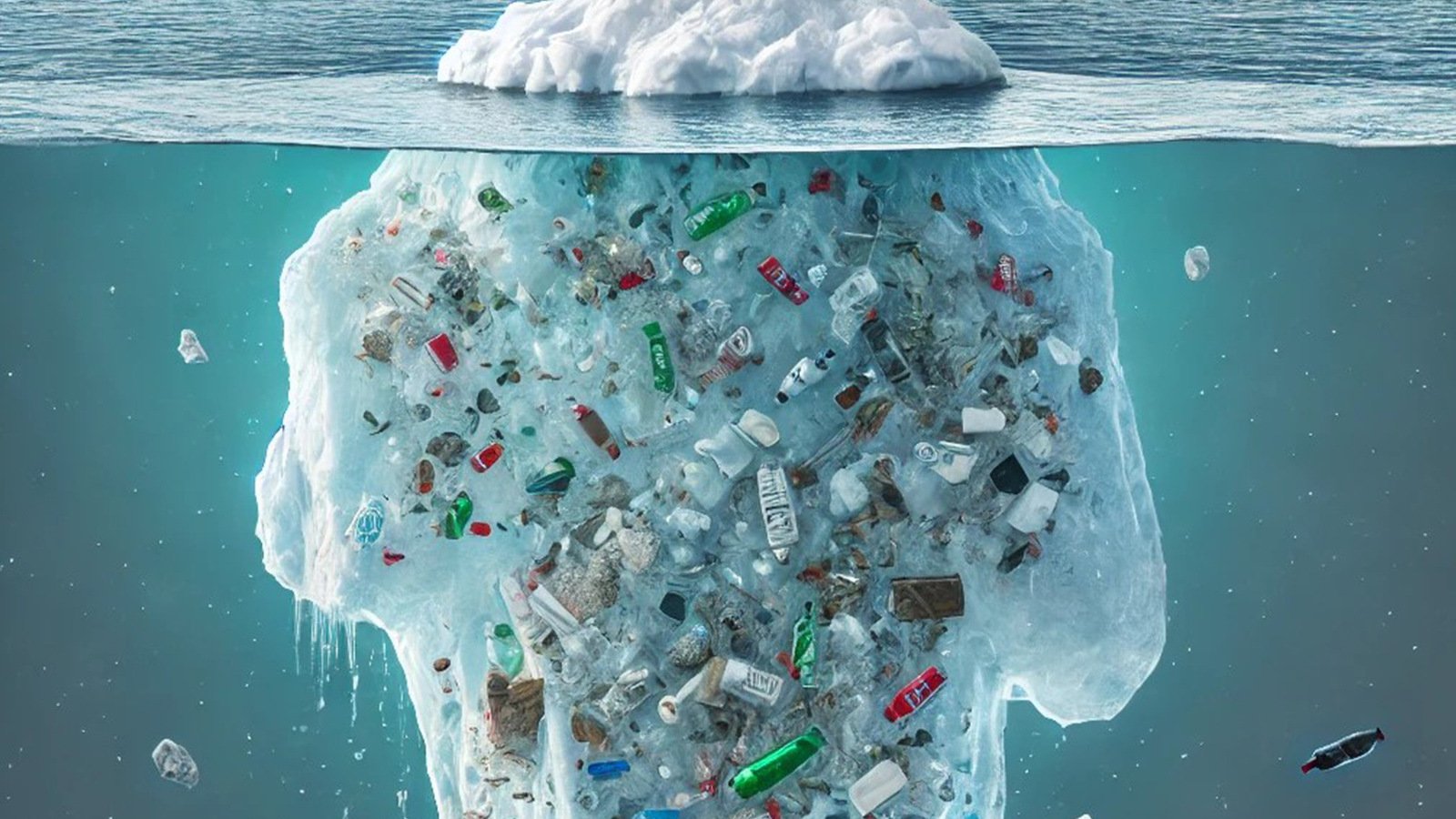In our pursuit of a world free of waste, we are often focused on reducing physical waste: packaging materials, residual waste, etc. We call these visible waste streams-waste that is tangible and we consciously throw away in the appropriate bin.
In addition to this visible waste, another, lesser-known form exists: invisible waste. This waste often remains out of sight, but it also has an ecological impact.
What exactly is invisible waste? And why does it play a bigger role in reducing waste than you might think? You can read about it in this blog.
What is invisible waste?
Invisible waste can be compared to an iceberg. The waste we see directly - such as residual waste - is just the tip of the iceberg. But beneath it, below the waterline, lurks a much more invisible amount of waste. This invisible waste is created at every step in a product's life cycle: during the extraction of raw materials, during production, transport and use, until the moment the product is discarded.

A concrete example is wear and tear on products during use, such as car tires. Every time a car drives, the tires lose tiny rubber particles. These microplastics end up in the air, water and soil through wind and rainwater. This makes tire abrasion one of the largest sources of microplastics.
The different types of invisible waste streams
In addition to tire wear, there are other examples of invisible waste.
To get a better idea in these invisible waste streams, we break them down into three categories: production, use and energy. Energy is an overarching invisible waste stream that is released in both production and use.
Invisible waste: energy
Many energy sources still rely on fossil fuels such as coal, oil and gas. Burning these releases CO2, among other things, which contributes to climate change and air pollution. The impact of energy consumption is often invisible, as emissions and resource consumption occur out of sight. Consider, for example, the energy required to produce and recycle materials such as steel, concrete and plastic. This process consumes large amounts of energy and involves CO2 emissions.
Invisible waste during production
Chain inefficiency: waste in the production chain
In many industries, such as the food and fashion industry, more is produced than is needed. This is often due to a mismatch between supply and demand, production waste and inefficiencies in the production process. The result? Raw materials, water and energy are consumed without resulting in a product that is actually utilized. We call this chain inefficiency. For example, in the fashion industry, huge stocks of clothing go unused because companies produce more than they sell. In the past, large chains such as H&M and Burberry were criticized for destroying unsold clothing, further increasing waste.
From cotton growing to processing, transportation and distribution, all these steps were ultimately unnecessary because the product never reached the end consumer, but ended up as waste. This makes chain inefficiency an invisible waste stream: the waste is not visible only when a product is discarded, but is in every stage of the chain.
Production processes and mining
In addition to chain inefficiency, the impact of resource extraction also plays a role in invisible waste streams. Mining is a good example: resource extraction involves moving large amounts of material to make a relatively small end product. Take gold mining: to produce one 5-gram gold ring, an average of 2,000 kilograms of rock must be moved. That's about as heavy as a Volkswagen Up.
This process causes not only a large amount of waste, but also ecological damage. The earth is uprooted and toxic substances such as cyanide and mercury are used to extract gold from ore. This still happens in some mining regions, such as countries like Peru, where regulations are less strict. These chemicals enter rivers via runoff rainwater, where they disrupt ecosystems.
In addition to the direct waste streams from mining, a large amount of material is moved to make a relatively small end product. This is also known as the ecological backpack: the hidden raw materials needed in the process. The gold ring we took as an example earlier has an ecological backpack of 2,000 kilo-an amount that is not visible in the final product, but has a large impact on the environment and resource use.
Transport
Transportation is a vital link in any chain, but it also contributes to invisible waste streams. Think of empty trucks after delivery, extra transport due to inefficient planning, or international distribution of products.
Every movement causes fuel consumption, CO2 emissions and vehicle wear and tear. That impact is not visible in the final product. Example: In the European Union, on average, one in five trucks travels empty. For national trips, this is as high as 24%.
Invisible waste during use
In addition to the hidden waste streams created during production, there are also forms of invisible waste that are only released during a product's use, such as microplastics from wear and tear on tires or materials lost when a product is discarded.
End-of-life waste streams
An example of end-of-life waste is cell phones. Worldwide, millions of cell phones are replaced that still function fine or can be repaired with minor repartition. Disposal often occurs due to technological advances and changing consumer preferences. As a result, discarded devices end up in drawers or are not recycled when valuable materials could be reused.
This principle is known as end-of-life waste: products that could potentially still be used, most of whose materials are lost. The waste is not only in the discarded phone itself, but in the entire chain behind it - from mining and manufacturing to the loss of valuable raw materials in recycling. For example, a smartphone contains up to 60 different metals, but less than 20% is effectively recycled.
Why invisible waste streams perpetuate the Circularity Gap
The annual Circularity Gap Report shows that only 7.2% of the global economy will be circular by 2024. This means that globally, the vast majority of materials are still not returned to the cycle, but are lost or incinerated as waste.
The Circularity Gap analyzes the global flow of materials and assesses what percentage of them are reused or recycled. In 2020, the global economy was still 8.6% circular, but that percentage has since dropped to 7.2%.
Much waste arises out of our sight-in production chains, in end-use and during recycling processes. Because invisible waste streams are often not included in mainstream waste statistics, their impact remains underexposed. This contributes to the Circularity Gap: the more raw materials are lost or not reused, the less circular the economy becomes. Although the Circularity Gap is being monitored, more attention needs to be paid to these invisible waste streams to reduce the gap.
Want to look beyond visible waste?
Invisible waste streams play a still understudied role in the sustainability and reusability of products. The better materials that can be reused are actually reused and processed, the less waste is generated. A life cycle assessment (LCA) provides insight into the broad environmental impact of a product or process, from raw material extraction to end-of-life. An LCA not only maps the direct impact, but also reveals hidden waste streams, such as energy consumption and raw material loss throughout the chain.
LCA is a science-based method for evaluating the environmental impact of a product, process or service throughout its life cycle. This includes everything from the extraction of raw materials for production to the disposal of waste materials. This insight helps companies reduce waste and use materials more efficiently. Analyzing the full life cycle of a product reveals where unnecessary environmental impact occurs and what improvements can be made.
Stay informed
Want to stay up to date with the latest developments? Follow us on LinkedIn, or subscribe to our newsletter. Curious about what Milgro can do for your operations and waste management process? Then get in touch with us.















